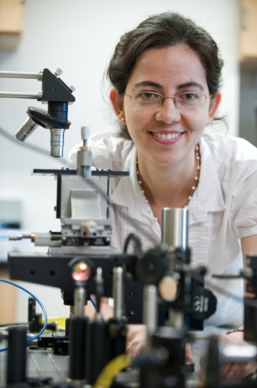By Azatuhi Ayrikyan and Sean Lee
Technology Entrepreneurship (TE) offers unique development opportunities for societies to educate and grow local talent as well as build diversity and long-term economic health. GATE –Global Accelerators of Technology Entrepreneurship – is an initiative based out of Boston University designed to support TE in emerging economies by leveraging the entrepreneurial ecosystems and international networks centered at U.S. research universities. As part of an initial needs assessment, please take their survey.
Entrepreneurship as the new development model
As emerging economies continue to grow around the world, there is also a growing recognition that entrepreneurship and market-driven solutions in these countries are highly effective tools for lifting people from poverty. Books detailing this relatively nascent view are already classics, such as C.K. Prahalad’s The Fortune at the Bottom of the Pyramid, and Dead Aid by Dambisa Moyo, which argues that traditional aid from wealthy countries to developing ones has been not only ineffective over time, but even counterproductive. In sync with this perspective, many global development organizations like Endeavor, Legatum, Lemelson, VC4Africa, the Bill and Melinda Gates Foundation, the Clinton Foundation, as well as private investment groups like Grey Ghost Ventures and Invested Capital and many others, are now focusing on entrepreneurship and socially responsible capitalism as an engine for development.
In hindsight, the only surprising thing about this shift in perspective is that it took so long. The wisdom of teaching someone in need to fish rather than giving them a fish is, of course, as old as history; given the opportunity and tools, people everywhere demonstrate their capacity for entrepreneurship and innovation.
Usually, the impact of entrepreneurship is discussed solely in terms of wealth creation and (hopefully) large scale poverty reduction. Perhaps, though, the real vigor and transformative power of entrepreneurship is not simply wealth creation, but the factual empowerment and broader opportunities it gives people over their own lives. Indeed, studies have shown that this is generally the primary motive for entrepreneurs starting a business in the first place.
The transformational power of technology
Technology, too, is ultimately about empowerment, as it gives humans the tools to directly shape their environment in dramatic ways (yes, for both good and bad). It is almost stating the obvious that, when widely adopted, technology’s long term impact on society has been greater tan any other social force. This fact, too, is as old as history, but has been brought vividly into focus by the current example of mobile devices. The continuing, explosive growth of mobile devices, adopted in virtually every corner of the world and by all levels of the economic pyramid, is already laying the groundwork for large social transformations in both developed and emerging economies.
Given the inroads that both entrepreneurship and technology are making as positive change agents in emerging markets, we believe there is now an important opportunity for developed nations – in particular for their university-based research communities – to support specifically technology entrepreneurship (TE) in emerging markets.
Technology Entrepreneurship: much greater than the sum of its parts
Why focus specifically on supporting TE, as opposed to entrepreneurship in general, irrespective of the role technology might play? Or why not just focus on disseminating more advanced technologies into emerging markets? We see several reasons:
TE is an engine for diversity. Technology entrepreneurship is greater than the sum of its parts in that it enables a country’s capacity to create and export new, innovative products that initially exist nowhere else. In short, TE is an engine for creating diversity. Recently, a strong positive correlation between the diversity of a country’s product offering and its overall growth has been shown. Even resource poor countries that have focused on their TE economies have seen sustainable long term growth and high quality of life for their citizens – Singapore and Israel being two widely-discussed cases in point.
On a broader social level, TE ecosystems are necessarily communities in which advanced education, international, collaborative networks and global perspectives – not to mention tolerance, openness and diversity, necessarily have a central place. In short, these are communities working not only to address its present needs, but are engaged in creating the future.
TE is the most effective way to sustainably disseminate technology. Understanding and addressing local market conditions is indeed the only way to disseminate the appropriate technology where it is needed most. This truism holds everywhere in the world, but sustainable dissemination of advanced technologies in emerging countries has been a particular challenge for global development groups, because the local market conditions are often incompletely understood by teams working from developed countries.
Finally, it just makes good, straightforward economic sense for developed economies to engage technology entrepreneurs in emerging markets. Emerging markets mean emerging opportunities for everyone, but these can only be understood and realized by partnering with the local knowledge base and workforce.
The unique opportunity for universities
What can universities from developed countries offer to support technology entrepreneurship in emerging markets? Universities are an integral species of the knowledge economy, both globally and locally. They provide the intellectual resources – patents, know-how, inventors at the cutting edge of their field – on which entrepreneurs can capitalize. Perhaps more importantly in this context, major research universities are the nerve centers of larger TE ecosystems: inventors, entrepreneurs, business students, investors, government, foundations and industry. And they have a diverse, deeply networked international body of faculty, students, alums and their networks eager and willing to make a positive global impact.
-Article originally published in Innovation Management
 Dear Reader,
Dear Reader, Incorporated on December 31st of last year, Predictus has developed a companion diagnostic for a class of oncology drugs called topoisomerase 1 (topo1) inhibitors. Meant to address the low response rates of topo1 inhibitor therapy patients, Predictus' diagnostic will save valuable time for cancer patients and provide a powerful decision tool for physicians. Dr. Ajit Bharti, co-founder of Predictus, has spent the past ten years studying the topo1 enzyme pathway and Dr. Jeff Elton has over twenty years of experience in the pharmeceutical industy. The Office of Technology Development recently awarded Predictus with the BU Launch Award.
Incorporated on December 31st of last year, Predictus has developed a companion diagnostic for a class of oncology drugs called topoisomerase 1 (topo1) inhibitors. Meant to address the low response rates of topo1 inhibitor therapy patients, Predictus' diagnostic will save valuable time for cancer patients and provide a powerful decision tool for physicians. Dr. Ajit Bharti, co-founder of Predictus, has spent the past ten years studying the topo1 enzyme pathway and Dr. Jeff Elton has over twenty years of experience in the pharmeceutical industy. The Office of Technology Development recently awarded Predictus with the BU Launch Award.


 The Ignition Award Program awards funds to Boston University faculty to bridge the gap between government-funded, discovery-oriented research and the follow-on development work performed by external commercial or non-profit entities. By enabling researchers to generate relevant data, reach key milestones, develop a prototype, or test an implementation strategy the Ignition Awards will help bring raw technology and business concepts to a mature enough state where they can be either licensed, form the basis of a new company, or create a new, non-profit social enterprise.
The Ignition Award Program awards funds to Boston University faculty to bridge the gap between government-funded, discovery-oriented research and the follow-on development work performed by external commercial or non-profit entities. By enabling researchers to generate relevant data, reach key milestones, develop a prototype, or test an implementation strategy the Ignition Awards will help bring raw technology and business concepts to a mature enough state where they can be either licensed, form the basis of a new company, or create a new, non-profit social enterprise.
